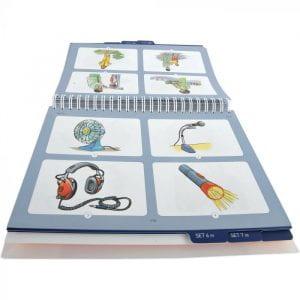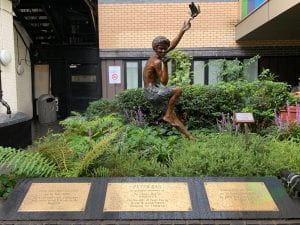Recently I attended the VIEW conference for Visual impairment (VI) specialist teachers and professionals in Birmingham, to raise awareness of our Eyelander online game for children with partial visual field loss (Hemianopia).

Eyelander is based on visual search training programmes that have been shown to be effective in improving functional visual abilities in adults that suffer from Homonymous visual field loss following stroke. In the game you have to search for coloured shapes amongst “distractor” shapes, with varying levels of task difficult as the game progresses. As you complete more searches your character (the “Eyelander”) make progress in escaping a volcanic desert island.
The game is available to play via a web browser, either on a computer with a mouse / laptop or a touch screen device. Its efficacy was validated via a published small scale trial in a group of children and young people with well defined hemianopia, suggesting playing the game every day over a period of 4 to 6 weeks can lead to improved visual abilities.
There was lots of interest in the game from VI teachers, who feel that partial visual field loss and problems seeing on one side is very common in the children they work with. Estimates indicate that up to 1 child in every classroom has some form of brain based visual impairment (also known as Cerebral Visual Impairment or CVI) and many of these may have visual field problems. Given this we are keen for more parents, children, teachers and others working with children with VI to know about Eyelander and to give it a go.

So visit www.eyelander.co.uk and register to play!









